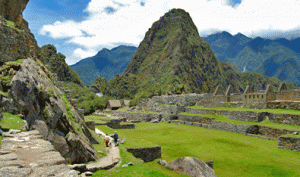 Peru Population 2013
Peru Population 2013
The current population of the Republic of Peru is estimated to be about 30.475 million people, which is an increase of about 3.7% from the last population recorded. The population of Peru has consistently been less than that of Argentina, but greater than the population of Chile. Based on the total land area and the population of the country, the population density is recorded to be about 57 people per square mile.
Demographics of Peru
The Peruvian population mainly identifies as part of the mestizo ethnic group, which is a group of mixed ancestries. The next largest ethnic group is the Quechua ethnic group. The rest of the population consists of small populations of the Aymara, Amazonian, Mulatto, and White ethnic groups. The official language of the Republic of Peru is Spanish. However, there are approximately 105 individual languages throughout the country. But, about 11 of these languages are considered to be extinct. Lastly, the literacy rate is considered to be about 85%.
Religion in Peru
The majority of the population of the Republic of Peru identifies as Roman Catholic (over 75% of the population). However, there have also been faiths and religions that are based on the worship of the Sun god, the Pachamama, and other aspects of nature. Also, there are other faiths and churches due to the work of missionaries. However, overall, the population of Peru is mainly religious, with very few claiming to be atheist or agnostic.
Sports in Peru
As is the same for many Latin American countries, the main sport of the Republic of Peru is football (American soccer). Football is the sport that is played by people of all social classes, ages, and skill levels. Another popular sport throughout the country is volleyball, especially women’s volleyball. Lastly, bullfighting is a very popular sport, despite attempts by pro-animal lobbies to get rid of bullfighting.
Machu Picchu Peru
7,000 feet above sea level and nestled on a small hilltop between the Andean Mountain Range, the majestic city soars above the Urabamba Valley below. The Incan built structure has been deemed the “Lost Cities”, unknown until its relatively recent discovery in 1911. Archaeologists estimate that approximately 1200 people could have lived in the area, though many theorize it was most likely a retreat for Incan rulers. Due to it’s isolation from the rest of Peru, living in the area full time would require traveling great distances just to reach the nearest village. Machu Picchu is vulnerable to threats from a variety of sources. While natural phenomena like earthquakes and weather systems can play havoc with access, the site also suffers from the pressures of too many tourists. Traveling from Cusco through the Urubamba Valley to Machu Picchu is a journey that emanates ancient history from start to finish. It’s here that active adventurers can step back in time and literally walk in the footsteps of the Inca.
Highlights of Peru
Historical Population of Peru
The population of the Republic of Peru has consistently increased over the last half a century. However, the increase has slightly slowed down near the latter half of the 20th century and the beginning of the 21st century.
| Year | Population (millions) |
| 1960 | 9.929 |
| 1965 | 11.47 |
| 1970 | 13.119 |
| 1975 | 15.14 |
| 1980 | 17.29 |
| 1985 | 19.46 |
| 1990 | 21.69 |
| 1995 | 23.83 |
| 2000 | 25.86 |
| 2005 | 27.56 |
| 2010 | 29.08 |
| 2011 | 29.4 |
Projected Population of Peru
The population of the Republic of Peru is expected to follow the same sort of trends that the historical data shows. One reason of this is due to the high birth rates, which will remain between 20 and 11 births per 1000 people. Also, the death rates will remain between 5 and 9 deaths per 1000 people. Also, the migration rate will remain positive over the next 37 years.
| Year | Population (millions) | Percent Increase |
| 2015 | 30.715 | 0.8% |
| 2020 | 32.344 | 5.3% |
| 2025 | 33.914 | 4.9% |
| 2030 | 35.281 | 4.0% |
| 2035 | 36.408 | 3.2% |
| 2040 | 37.272 | 2.4% |
| 2045 | 37.863 | 1.6% |
| 2050 | 38.197 | 0.9% |